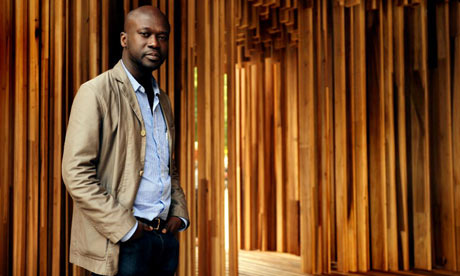To save state dollars, the Texas legislature ordered the Texas Department of State Health Services to privatize one of its public psychiatric facilities to cut costs in the facility by ten percent without diminishing quality of care. Only one bidder responded: GEO Care, a branch of GEO Group, the country’s second largest private prison company. GEO Group’s prisons and immigrant detention centers have a track record of abuse, deaths, sexual violence and medical neglect of inmates and detainees. And more recently, GEO Care has proven to be made of precisely the same stuff.
On its website, GEO Care, which currently operates six “residential treatment hospitals” in Florida, South Carolina, and Texas, GEO Care says it “provides government clients with turnkey solutions for medical and mental health rehabilitation facilities.”
But reports from the company’s active psychiatric facilities suggest that it’s version of solutions look far more like institutionalized neglect.
A Track Record of Abuse and Violence
GEO Care is already facing $53,000 in fines from the State of Texas for violations of patient care standards in Montgomery County Mental Health Treatment Facility, a Texas mental health facility the company has operated for a year and a half. The Austin American-Statesman reports:
Plans for a psychiatric hospital in Montgomery County publicly emerged three years ago, when Texas legislators signed off on the idea to help ease the growing number of forensic patients, mentally incompetent criminal defendants waiting in jails to be transferred to a state hospital.
The 100-bed, $33 million hospital has a mock courtroom, a gymnasium, a library and other amenities. It brought 175 jobs to Conroe and saves the county from routinely having to drive inmate patients to Rusk State Hospital, more than 100 miles away.
A series of health and safety and compliance reviews by the Texas Department of State Health Services found GEO Care’s Montgomery facility rife with patient neglect, forced seclusion, denial of patient’s access to phones and family visits and administering of medication without patient consent.
In an internal Department of Health Services email obtained by Colorlines.com, State Hospitals Section employee Jo Ann Elliott wrote to her colleagues about a particularly troubling case of neglect in the facility. “While in seclusion for four hours, [a] patient banged his head on the seclusion room window and walls, causing lacerations to both eyes and a bruise to head. Patient threatened staff if door was opened.”
In the email, Elliot added, “No physician assessment occurred during the 4 hour seclusion. This lack of action by staff would be a reportable incident to DFPS [Department of Family and Protective Services] in one of the state hospitals.”
A separate internal email from Bill Race, also of the Departments’ Hospital Section, documents repeated failure of facility staff to properly secure patient consent before administering medications and treatment plans. In one case, the file of a 45-year-old HIV positive man who struggled with Schizoaffective Disorder included “No medical notes documenting plan for treatment of HIV, or other conditions…” The man’s “[t]reatment planning identified psychosis, SA, but not HIV. …”
Race noted that another patient, a Spanish speaking schizophrenic man, was treated with at least six psychiatric drugs but no consent was documented until a month after the regimen of drugs started.
Texas mental health advocates are concerned about the GEO Care bid. Robin Peyson, the Director of the Texas branch of the National Alliance on Mental Illness, says that while her organization does not categorically reject the privatization of mental health facilities, GEO Group is an unacceptable choice of contractor.
“Our concerns rest with GEO Care in particular because of the history of problems with GEO Care facilities— significant occurrences of abuse of neglect.”
“I visited the Montgomery facility,” Peyson said. “Obviously it was an arranged scheduled visit but the facility was very nice compared to some state facilities. But my personal experience is overridden by the kinds of concerns that have been expressed through judicial venues and quality monitors.”
Beyond abuses in the Montgomery facility, GEO has a sordid history in Texas. In 2007, for example, the GEO run Coke County Juvenile Justice Center was shuttered after reports of ramped sexual abuse of the young inmates and a number of suicides. And in 2009 at GEO’s Reeves County Detention Center, inmates rioted, in part because of poor health care.
Elsewhere, the company has a similarly dismal record of care for psychiatric patients. In Florida, the Associated Press reported a series of brutal deaths inside a 355-bed Geo facility in Broward County that holds mentally ill patients:
Three gruesome deaths at the privately run South Florida State Hospital triggered an investigation that revealed concerns that employees were overmedicating patients and failed to call the state abuse hotline after a patient died in a scalding bathtub, according to documents obtained by The Associated Press.
The AP docuemnts three deaths:
In August 2011, Loida Espina died after her head was perhaps slammed through a wall.
…
In June 2011, Luis Santana, who was highly medicated, was found dead in a scalding bath with skin “sloughing” off his face after staff failed to check on him every 15 minutes as required, according to a November review by DCF.
…
Also in June 2011, a patient with a history of suicide attempts by jumping died after leaping from an off-site building.
Spending Priorities
Data from the Kaiser Family Foundation shows that Texas has the lowest per capita spending on state mental health care services than any other state. The second lowest spender is Florida. Peyson says that cutting an additional ten percent off the top just doesn’t make sense.
“When you’re cut to the bone already and then try to save 10 percent on top of that, I do wonder in what way a for profit company can realize ten percent savings.”
While GEO Care is cutting costs at the expense of patient and inmate well-being, it’s spending lots of money elsewhere. And though advocates have formed a coalition to press the Texas Legislature and Governor Rick Perry to turn down the Geo Care—groups including Grassroots Leadership, The ACLU of Texas, The United Methodist Church, and the Texas Criminal Justice Coalition—they’re confronted with a company that pours tens of thousands of dollars into Texas political campaigns and even more into it’s lobbyists.
According to the Texas Ethics Commission website, since 2008, GEO contributed to dozens of Texas political campaigns, including $11,000 to Gov. Rick Perry’s campaigns and $2000 to State Senator Tommy Williams, who the Austin American-Statesmen reported was “instrumental in gathering legislative support for the [Montgomery] county hospital in his district.” In July, Williams’s spokesperson told the paper, “He’s for whatever works, and he thinks privatization is working in Montgomery County to provide the most services to the most people. Yes, they’ve had hiccups, but the county is taking actions to address those.”
“When private, for-profit companies bid on contracts to privatize public facilities like Kerrville State Hospital, they often promise to save the tax-payer money, which is enticing to a state like Texas that continues to face a serious budget crisis,” said Kymberlie Quong Charles of Grassroots Leadership. “But that promise is in conflict with their first priority of making a profit. They may be able to cut their operating budget, but at the cost of peoples’ jobs and patients’ safety.”
In its profit seeking, GEO has found use for the politically connected. In the Kerrville bidding process, questions about a conflict of interest GEO Care’s bid have already emerged. According to reporting by several Texas newspapers, the bidding process appears tainted by insider maneuvering.
The Austin American-Statesmen reports:
Last month, questions surfaced over whether it was ethical for Stephen Anfinson — who headed Kerrville State Hospital until early 2011 — to participate in efforts by Geo Care to run the Kerrville hospital. Anfinson began working for Geo shortly after leaving the facility and now helps oversee the company’s psychiatric hospitals.
Anfinson’s insider knowledge of the facility gave his employer an unfair competitive advantage and tainted the integrity of the process, said Tom “Smitty” Smith of Public Citizen, a government watchdog group.
The company may also have made an underhanded attempt to silence potential opposition to their bid. Last year GEO Care donated to Peyson’s organization, NAMI Texas, which listed the company among its “Corporate Champions”. Peyson says the company donated $5,000 for NAMI Texas’s 2011 annual conference.
“I’d think they won’t be donating again this year,” Peyson said, after opining that the state should turn down the bidder.
The Department of Health Services is expected to decide this month whether to recommend the GEO bid to state leaders, including Governor Perry.

















